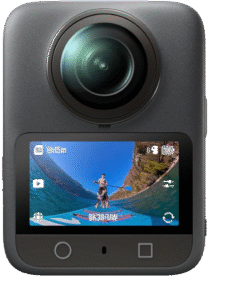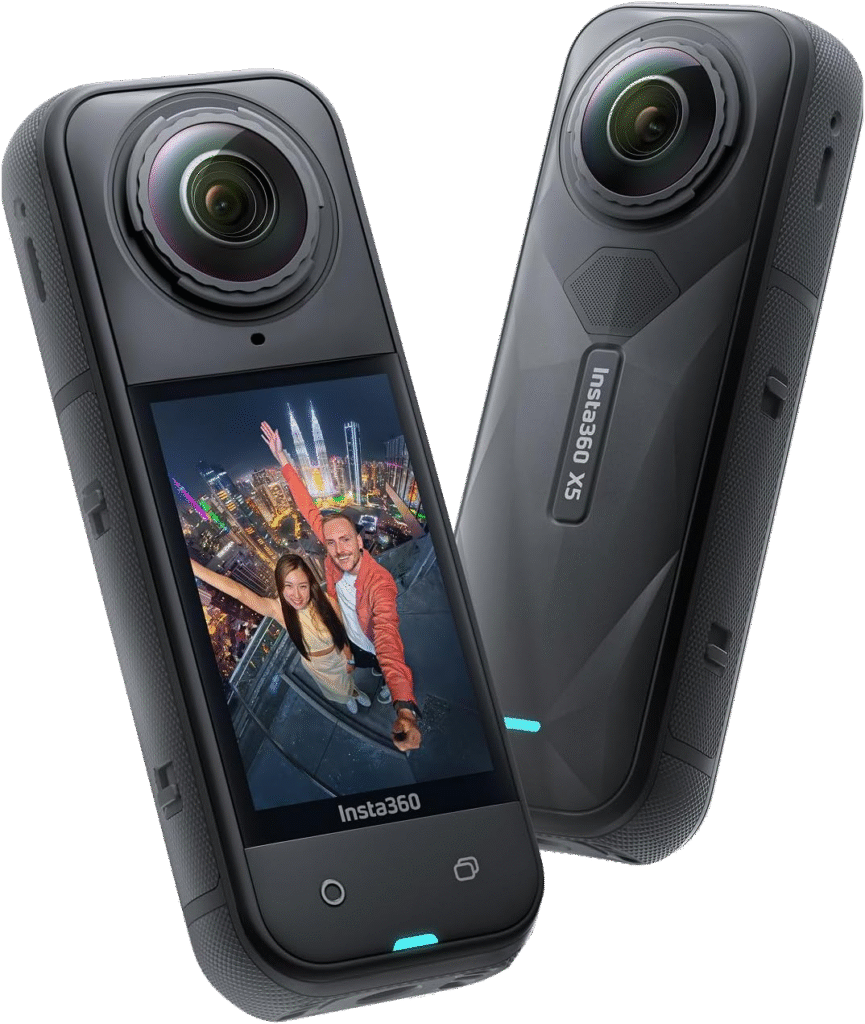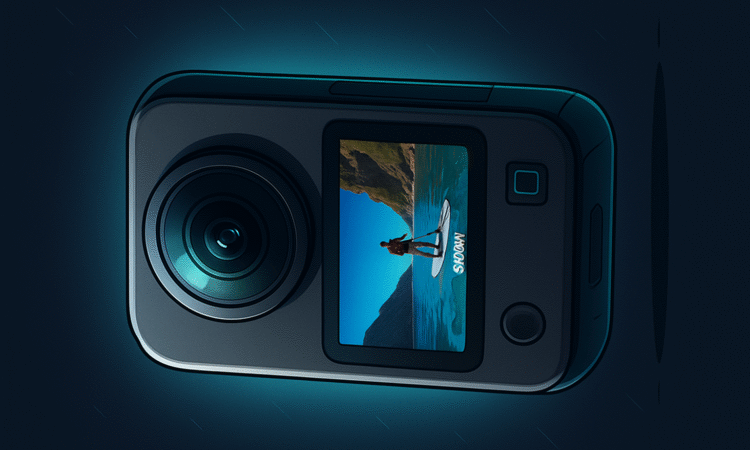If you’re hunting for the ultimate action or 360-degree camera for 2025, you’re likely stuck between the DJI Osmo 360 and the Insta360 X5. You’ve read the glowing reviews, scrolled through specs, and now you just want the unfiltered truth. You’re in the right place.
Let’s cut to the chase:
The DJI Osmo 360 doesn’t actually suck. But it has quirks that might make you hesitate—until you see what it delivers.
Why People Might Think the DJI Osmo 360 Sucks
Here’s the dirt:
- It’s pricey. $549.99 USD stand alone. At its price point, you could snag a DJI Osmo Pocket 3 for $250 more or even upgrade a mirrorless camera lens. For casual users or those just entering the 360-camera space, this price tag can be a bit of a gut punch—especially when the competition offers compelling options at lower prices (not including the X5 which is also $549.99 USD).
- It’s not modular. Unlike the Insta360 X5, you can’t swap lenses on the fly if one were to be damaged. This might be a deal breaker if you are known to break your action camera lenses often. That said, replacement lenses are still available and reasonably priced if you buy the right bundle through DJI.
- The Osmo 360 also splits footage into 30-minute clips. This feels like a step back for some content creators, especially those filming long-form sessions like events, sports, or interviews. However, it’s actually a safety net to protect your footage from being corrupted, which can be a lifesaver & is a pro like feature.
- The screen is small and landscape-oriented. Vertical content creators may be disappointed that the Osmo 360’s UI and display cater more toward horizontal framing. If you’re all about TikTok, Reels, or Shorts, this might feel like a mismatch but not a deal breaking as you can still edit for vertical in post.
Now, let’s flip the script and see why this camera is still a beast.

What You Really Want in an Action Camera
When shopping for a vlogging or action camera, here’s what matters most:
- Image Quality (sharpness, focus, low-light performance)
- Battery Life & Ecosystem Compatibility
- Stabilization & Heat Management
- Audio Quality (built-in and external mic support)
- Lens Protection & Repairability
- Stitching and Post-Processing
- Price vs. Value
These aren’t just specs — they’re what actually make or break your shooting experience. Let’s break down how the DJI Osmo 360 stacks up against the Insta360 X5 in each area.
1. Image Quality: Sharper, Better HDR
This is where the DJI Osmo 360 really starts to shine. Most viewers won’t notice the difference at first glance — both cameras produce high-quality footage. But side-by-side, the DJI Osmo 360 captures more in-focus details, especially when shooting at higher resolutions or in complex environments like forests, crowded streets, or interiors with mixed lighting.
Where DJI really pulls ahead is in HDR and color depth. The DJI Osmo 360 supports D-Log M with 10-bit color, giving creators the flexibility to color grade their footage and retain finer details in shadows and highlights. Meanwhile, Insta360’s adaptive tone mapping often feels artificially smooth, which can look great on social media but falls apart in post-production.
Up-close footage, dynamic lighting, and fast-moving scenes — these are where DJI outperforms in clarity and color accuracy.
2. Battery Life & Compatibility: DJI’s Ecosystem Wins
While the Insta360 X5’s larger battery (up to 2,800mAh) might sound like a win on paper, DJI’s ecosystem advantage is huge. The DJI Osmo 360 uses the same batteries as the Osmo Action 5 Pro, which means less gear to carry and more flexibility when swapping power sources.
If you’re already a DJI user, you might have spare batteries, chargers, or power hubs that work across multiple products. That kind of interoperability saves you time, money, and bag space.
And importantly — both cameras are champions when it comes to thermal management. You can film in 8K or high-performance modes for extended periods without fear of overheating, which is something not all 360 cameras can promise.
3. Stabilization & Heat Management: Rock-Solid
Stabilization is critical in action filming. DJI’s RockSteady and HorizonSteady tech do exactly what the names promise: lock your horizon, smooth your steps, and keep shaky footage out of your edit timeline.
Whether you’re running, biking, skydiving, or holding the cam in your hand while walking, the Osmo 360 ensures a professional-looking result. Reviewers have repeatedly praised its ability to handle jerky motion and fast transitions.
Heat is also a non-issue. DJI has clearly engineered the internals to dissipate heat effectively, and long recording sessions — even under direct sun or in tropical conditions — don’t result in thermal throttling or sudden shutdowns.
4. Audio: DJI’s Edge in Clarity
Audio often gets overlooked, but it’s one of the biggest differentiators between “meh” and “pro” content. The DJI Osmo 360’s onboard microphones are surprisingly good, especially in windy conditions or noisy outdoor environments.
What really gives DJI the edge is its external mic support. Their wireless mic ecosystem (like the DJI Mic 2) pairs seamlessly with the Osmo 360, letting creators record crisp dialogue, ambient sound, or musical performances without needing extra adapters or workarounds.
In contrast, while Insta360 offers solid audio, it often requires more setup, more accessories, and still doesn’t quite match the clarity and wind resistance DJI delivers out of the box.
5. Lens Durability & Repairability: Insta360’s One Win
Let’s give Insta360 some well-earned credit here. Their modular lens system is user-friendly and cheap to replace. If you crack or scratch your lens, you can swap it out in minutes for under $30. That’s huge for anyone filming in rough terrain or action-heavy scenarios.
However, the trade-off is quality. Insta360 lenses — while practical — suffer from excessive flaring and can distort under bright lights. DJI’s integrated lenses may be less swappable, but they’re engineered to resist flare and ghosting even in harsh sunlight, making them the better choice for image purists.
So if you’re rough on your gear, Insta360 gives you peace of mind. But if you care about lens performance in all lighting conditions, DJI has you covered.
6. Stitching Quality: Insta360’s Stronghold
There’s no denying that Insta360 is still the king of stitching. Their AI-driven image processing is smooth, smart, and consistently makes subjects look natural — even when close to the lens. Face warping and stitch lines are minimal.
DJI isn’t far behind, and in some cases, their stitching is great. But under extreme angles or when people are too close to the seams, you might notice more warping than with the X5. For creators focused on seamless 360 shots or VR projects, Insta360’s slight edge here might be a dealmaker.
Still, DJI is improving quickly with firmware updates and better algorithms — so this gap may shrink fast.
7. Price vs. Value: DJI Delivers More
The DJI Osmo 360 isn’t cheap — but you’re paying for innovation, build quality, and futureproof features.
It’s easy to look at the price tag and flinch, especially when the Insta360 X5 is a bit more budget-friendly. But when you consider DJI’s camera ecosystem, superior sharpness, better audio tools, heat reliability, and HDR capabilities, the value is clear.
Plus, with built-in internal storage, USB 3.1 transfer speeds, and forward compatibility with DJI’s latest accessories, the Osmo 360 is a more future-proof investment.
If you’re a creator who needs reliability and polish without fuss, it’s hard to beat.

DJI OSMO 360

Insta360 X5
Final Verdict: The Best 360 Camera for Creators in 2025?
If you want:
- Unmatched sharpness and HDR for stunning visuals
- Clean audio, with or without external mics
- Seamless compatibility with your DJI gear
- Flare-resistant lenses and reliable footage protection
- Exceptional stabilization and heat resistance
…then the DJI Osmo 360 is the camera to beat in 2025.
Sure, it has flaws — price, non-modular lenses, and a landscape-oriented screen. But none are dealbreakers. Head-to-head with the Insta360 X5, the Osmo 360 wins in nearly every category that matters for real-world creators.
So, yeah — it might “suck” in some ways, but you’ll probably want to buy it anyway.
Out of the 17 YouTube Reviews I have watched, the one attached below is the best by far with in depth information on all things 360 Cameras.
- Nebula X1 Pro: The Home Theater Projector I Always Wanted
- Here’s Why the DJI Osmo 360 Camera Sucks (But You Should Probably Buy It Anyway)
- 🔍 Eufy HomeBase 3 vs HomeBase 2 – Which One Should You Get?
- The Truth About the Eufy S4 Max PoE System (And Why I’m Still on the Fence)
- Best Wireless Outdoor Security Cameras Under $100 (2025)
